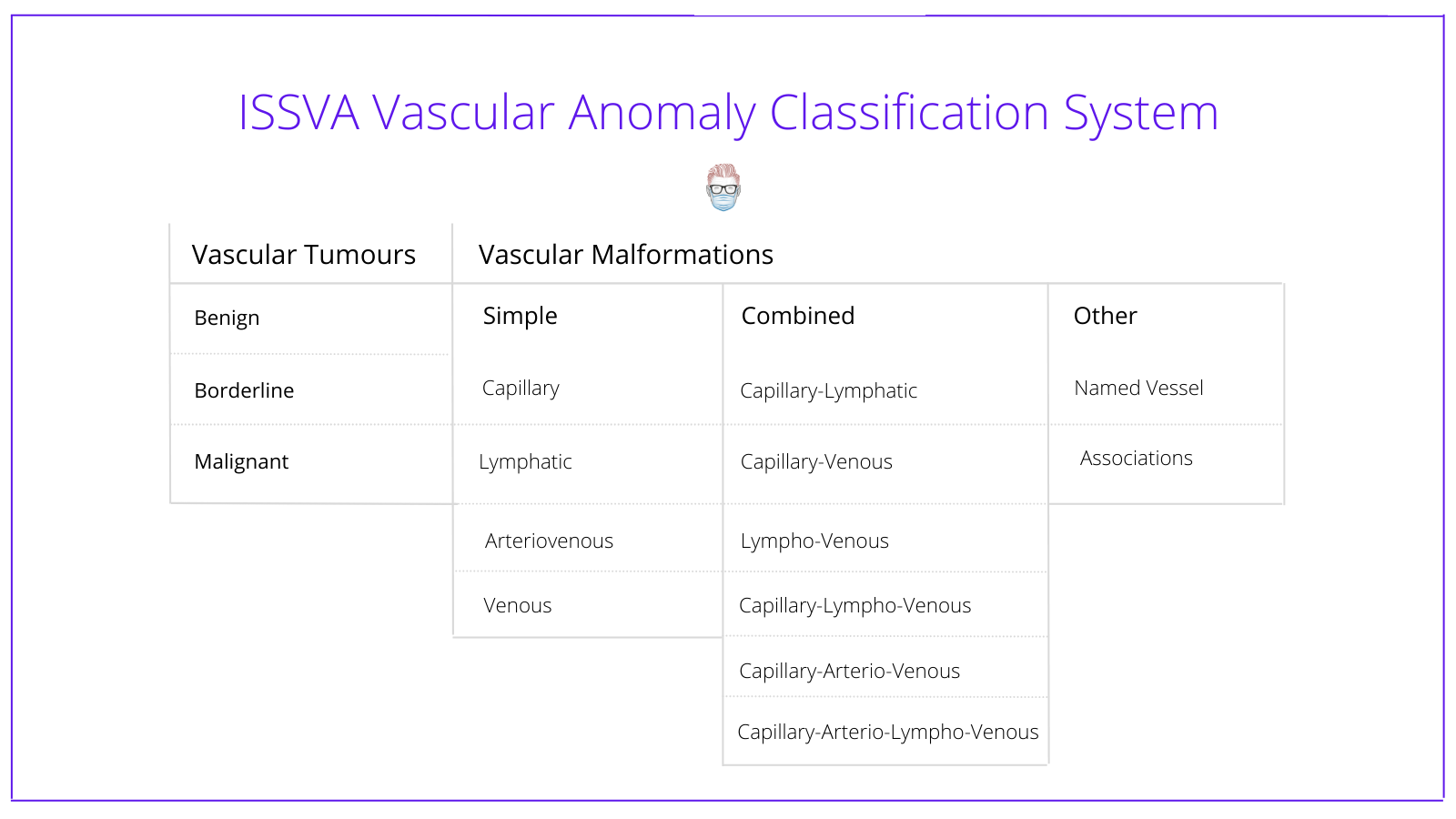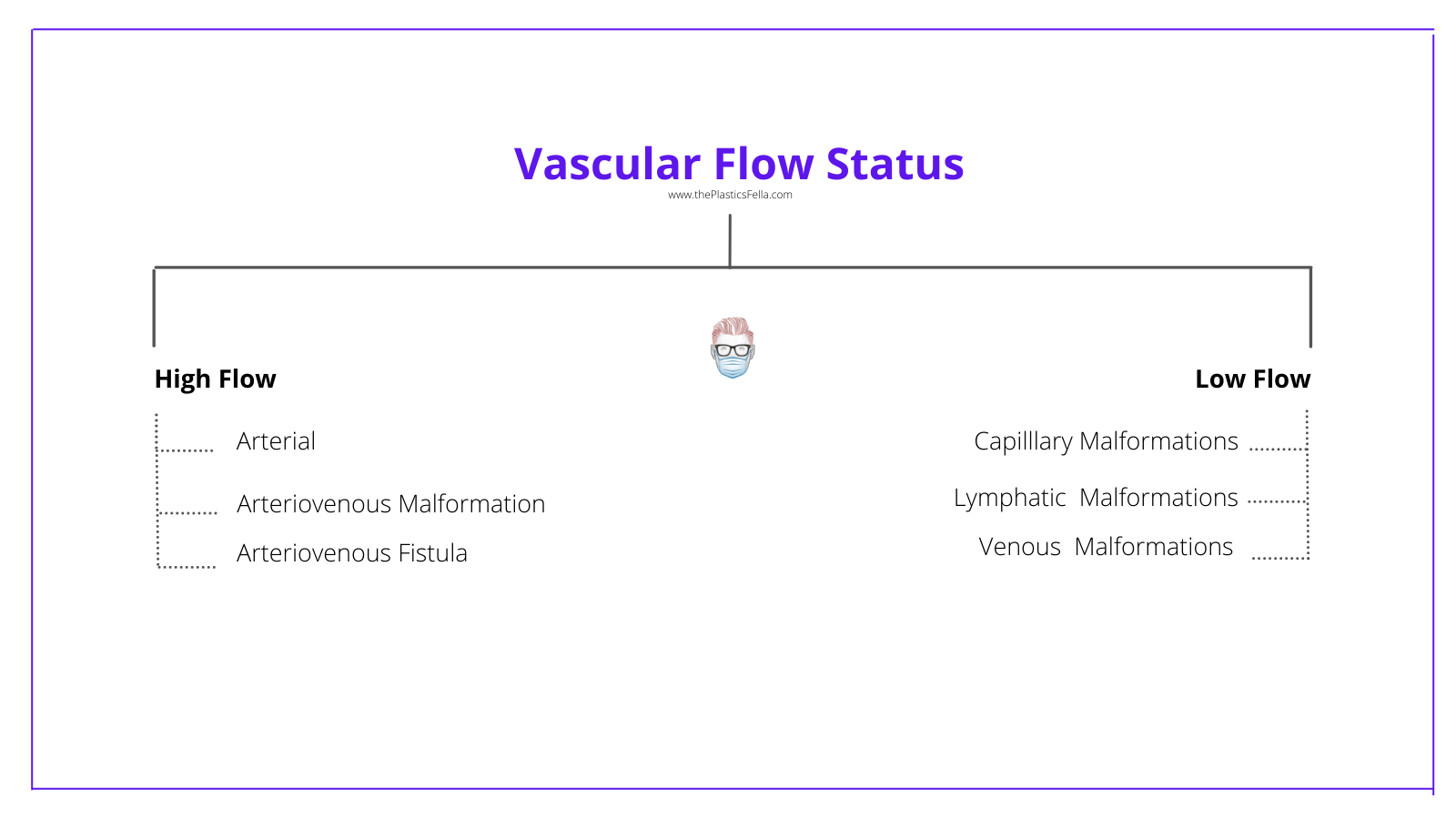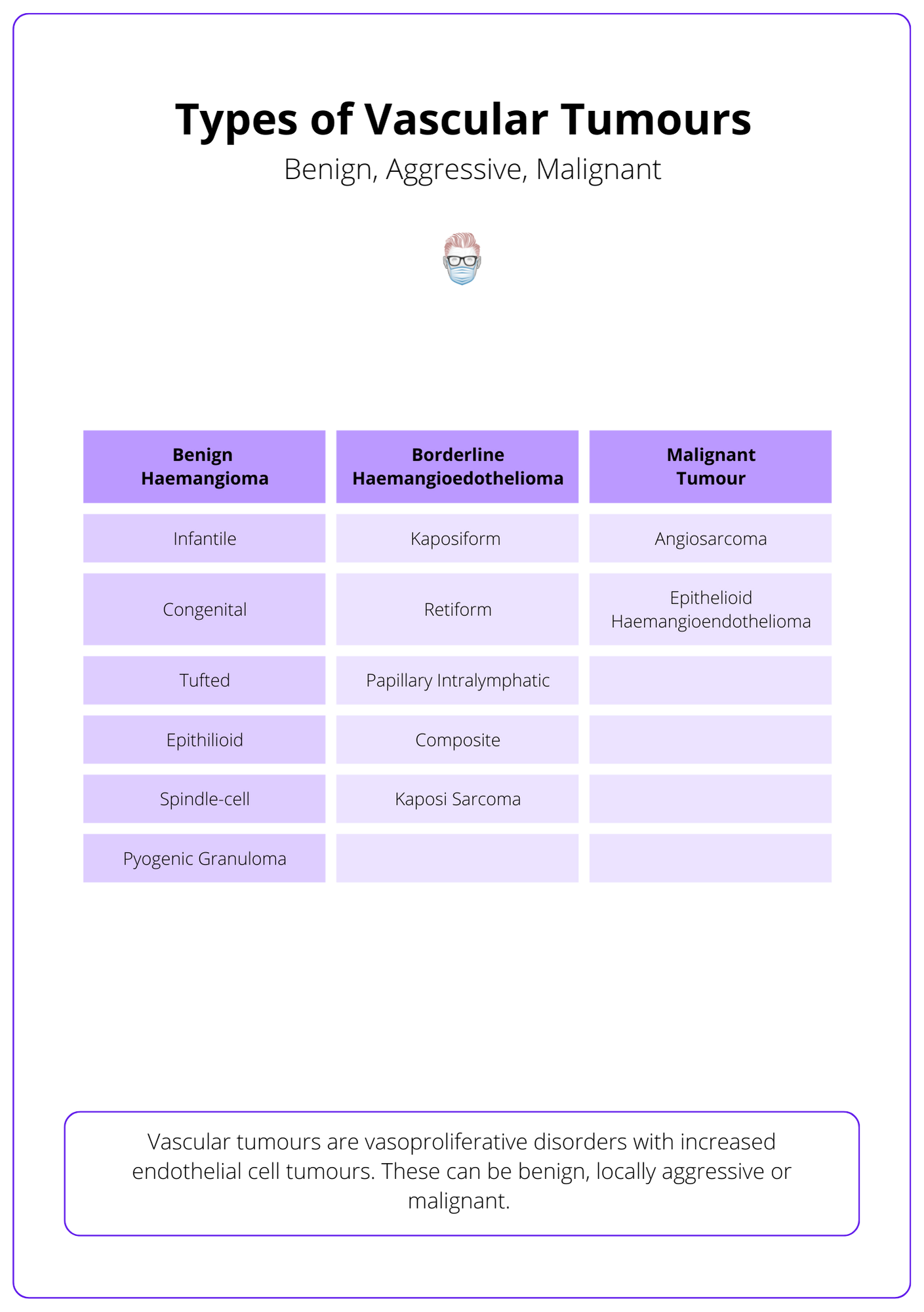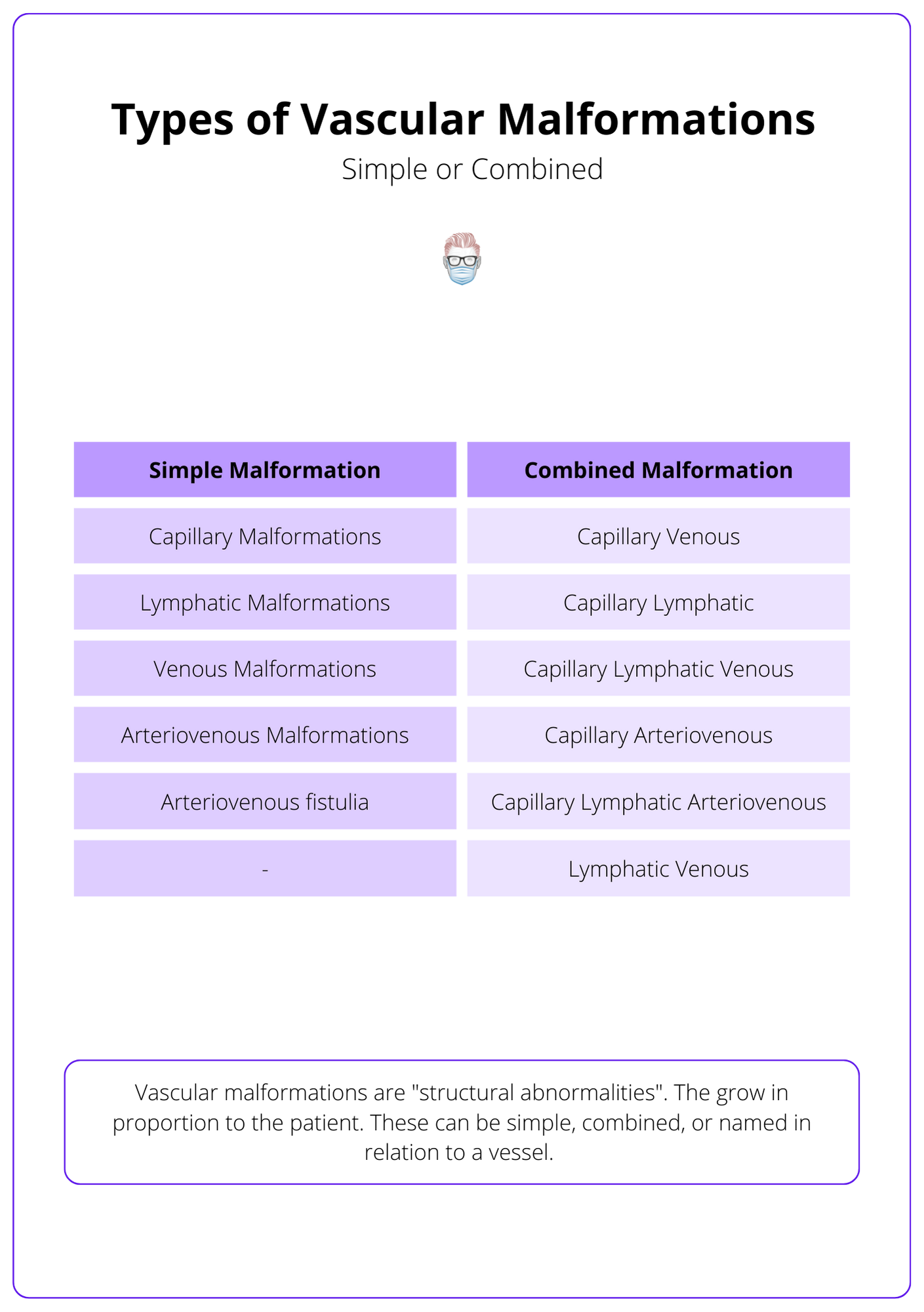Summary Card
Classifications
ISSVA system based on the work by Mulliken and Glowacki.
High-flow vs Low-flow
Vascular Tumours
Vasoproliferate disorders that do not grow in proportion to the patient. They can be benign, borderless or malignant.
Vascular Malformations
Structural abnormalities that grow in proportion to the patient. They can be simple, combined or associated with other conditions.
Classification of Vascular Anomalies
Key Point
The International Society for the Study of Vascular Anomalies (ISSVA) developed a classification system based on the seminal work by Mulliken and Glowacki.
The ISSVA revised its classification system in 2018. It is now the standard system for classification, communication, and documentation. It is seen in the table below.

Other classification systems have been published. For example
- Fishman1: patterns of flow (fast vs slow)
- Mulliken and Glowacki2: endothelial properties (hemangiomas have proliferative endothelium, vascular malformations have stable endothelium)
- Jackson3: clinical, histologic, and vascular flow

Vascular Tumours
Key Point
Vascular tumours are vasoproliferative disorders with increased endothelial cell tumours. They do not grow in proportion with the patient. Infantile haemangioma is the commonest type.
Vascular tumours are vasoproliferative disorders with increased endothelial cell tumours. They do not grow in proportion with the patient. These can be benign, locally aggressive or malignant.
The most common type is an infantile hemangioma. Other types of vascular tumours are illustrated in the table below.

Kaposiform haemangioendothelioma and tufted angioma are both associated with the Kasabach-Merrit phenomenon:
- A consumptive coagulopathy with thrombocytopenia and hypofibrogenaemia that results in platelet trapping.
Vascular Malformations
Key Point
Vascular malformations are "structural abnormalities". They grow in proportion to the patient. They can be related to other systemic anomalies.
Vascular malformations are "structural abnormalities". The grow in proportion to the patient. These can be simple, combined, or named in relation to a vessel.
The types of simple and combined vascular malformations are illustrated in the table below.

Vascular abnormalities can be linked to other abnormalities in the body. These include:
- Sturge-Weber Syndrome: capillary malformation of the trigeminal nerve
- Parkes-Weber Syndrome
- Klippel-Trenaunay Syndrome
References
- Fishman, S.J., and Mulliken, J.B.Vascular anomalies: A primer for pediatricians. Pediatr. Clin. North Am. 45: 1455, 1998.
- Mulliken, J. B., and Glowacki, J. Hemangiomas and vascular malformations in infants and children: A classification based on endothelial characteristics. Plast. Reconstr. Surg. 69: 412, 1982.
- Jackson, I. T., Carreno, R., Potparic, Z., et al. Hemangiomas, vascular malformations, and lymphovenous malformations: Classification and


